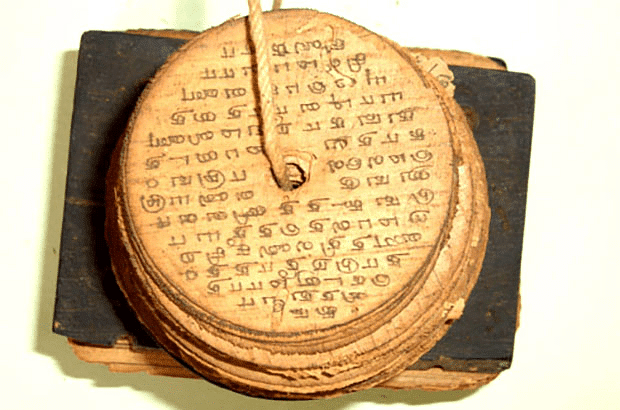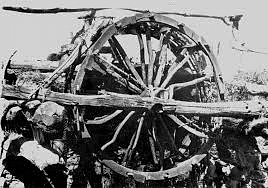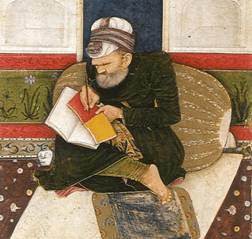NCERT Solutions for Class 7 Social Science - Tracing Changes Through a Thousand Years
Let’s Recall
Q1. Who was considered a "foreigner" in the past?
Ans: According to the medieval period, any stranger who did not belong to a certain society or culture and was not a part of that particular village was regarded as a foreigner. For example, a city-dweller, therefore, might have regarded a forest-dweller as a foreigner. But, if two people belong to the same village, they are not foreigners in spite of their different religious or caste backgrounds.
Q2. State whether true or false:
(a) We do not find inscriptions for the period after 700.
(b) The Marathas asserted their political importance during this period.
(c) Forest-dwellers were sometimes pushed out of their lands with the spread of agricultural settlements.
(d) Sultan Ghiyasuddin Balban controlled Assam, Manipur and Kashmir.
Ans: (a) False
(b) True
(c) True
(d) False
Q3. Fill in the blanks
(a) Archives are places where ______ are kept.
(b) ______was a fourteenth-century chronicler.
(c) ______, ______, ______, ______ and ______ were some of the new crops introduced into the subcontinent during this period.
Ans:
(a) Archives are places where manuscripts are kept.
 India's Palm Leaves Manuscripts(b) Ziyauddin Barani was a fourteenth-century chronicler.
India's Palm Leaves Manuscripts(b) Ziyauddin Barani was a fourteenth-century chronicler.
(c) Potatoes, corn, chillies, tea, and coffee were some of the new crops introduced into the subcontinent during this period.
Q4. List some of the technological changes associated with this period.
Ans: The technological changes associated with this period are:
- The Persian wheel for irrigation.
 The Persian Wheel
The Persian Wheel - The spinning wheel in weaving.
- Firearms in combat.
Q5. What were some of the major religious developments during this period?
Ans: The major religious developments during this period:
- Important changes occurred in the Hinduism religion which included the worship of new deities.
- Hindus started the construction of temples by royalty.
- Importance of Brahmanas and the priests grown and they became dominant groups of the society.
- There was also the emergence of the idea of bhakti i.e. of a loving, personal deity.
- During this period, new religions like Islam appeared in the subcontinent who brought the teachings of holy Quran.
- Many rulers were patrons of Islam and the ulama.
Let’s Understand
Q6. In what ways has the meaning of the term “Hindustan” changed over the centuries?
Ans: The meaning of the term "Hindustan" changed over the centuries:
- In the 13th century, Minhaj-i-Siraj, a chronicler who wrote in Persian used "Hindustan" in a political sense for lands that were a part of the dominions of the Delhi Sultan.
- In 13th century, Hindustan never included south India. It meant the areas of Punjab, Haryana and the lands between the Ganga and Yamuna.
- In 14th century poet Amir Khusrau used the word "Hind" for the culture and the people of Indus river.
- But in the early 16th century Babur used Hindustan to describe the geography, the fauna and the culture of the inhabitants of the subcontinent.
- Earlier, the term "Hindustan" never carried the political and national meanings which we associate with it today. But now this terms is used for nowadays India.
Q7. How were the affairs of jatis regulated?
Ans: During this period, several social and economic differences emerged among the people, which led to the introduction of Jatis or sub-castes, where people were ranked on the basis of their occupations and backgrounds. The affairs of jatis were regulated by an assembly of elders known as the jati panchayat in some areas. The jatis were required to follow the rules of their villages, which were governed by a chieftain.
Q8. What does the term pan-regional empire mean?
Ans: The term pan-regional empire mean the empires which were spanning diverse regions which was expanded to a larger area or regions like dynasties of Cholas, Khaljis, Tughluqs and Mughals.
Let’s Discuss
Q9. What are the difficulties historians face in using manuscripts?
Ans: Difficulties faced by historians in using manuscripts:
- There was no printing press in those days so scribes copied manuscripts by hand which was difficult to read and understand.
- During copying, scribes also introduced small changes in a word or sentence which grew over centuries of copying.
- The original manuscript of the author is rarely found today so they are totally dependent upon the copies made by later scribes.
- Historians have to read different manuscript versions of the same text to guess what the author had originally written.
 A painting of a scribe making a copy of a manuscript.
A painting of a scribe making a copy of a manuscript.
Q10. How do historians divide the past into periods? Do they face any problems in doing so?
Ans: Historians divide the past into periods on the basis of economic and social factors to characterize the major elements of different moments of the past:
- The historians faced a lot of problems because time itself reflects changes in the social and economic, organisation, in the persistence and transformation of ideas and beliefs.
- Therefore, describing the entire period as one historical unit is not without its problems.
- "Modernity” also carries a sense of material progress and intellectual advancement.
- The study of time is made somewhat easier by dividing the past into large segments periods which possess shared characteristics.
Let’s do
Q11. Compare either Map 1 or Map 2 with the present-day map of the subcontinent, listing as many similarities and differences as you can find.
Ans: Map 2 was made by a French cartographer. Map 1 was made by the Arab geographer Al-Idrisi. Map 1 was made in 1154 C.E., whereas Map 2 was made in the 1720s. The first modern maps of India were produced by Survey of India.
In Map 1, places are marked in Arabic, whereas in present-day maps, the places in the subcontinent are marked in English. In Map 1, South India is located where North India is located on the present-day map.
In Map 2, the coastal areas are well-detailed, whereas in Map 1, the coastal areas are not marked in detail like in Map 1. Some of the well-known names are spelt differently in Map 1. Map 2 was used by merchants and European sailors on their voyages.
Q12. Find out where records are kept in your village or city. Who writes these records? Is there an archive? Who manages it? What kinds of documents are stored there? Who are the people who use it?
Ans: In our village, records are kept in the Panchayat office. Gram Sevak who is a government employee writes these records. There is no archive in our village. Sarpanch manages it. The documents stored there include the record of the land of the village, data of births and deaths, the number of public properties, data of health centres, etc. Villagers use these records. The certificates are issued to the villagers on the basis of these records.
|
62 videos|336 docs|46 tests
|
FAQs on NCERT Solutions for Class 7 Social Science - Tracing Changes Through a Thousand Years
| 1. What is the timeline covered in the NCERT textbook Tracing Changes Through a Thousand Years? |  |
| 2. What are the key themes covered in the NCERT textbook Tracing Changes Through a Thousand Years? |  |
| 3. How does the NCERT textbook Tracing Changes Through a Thousand Years help students understand India's history? |  |
| 4. What is the significance of studying the period covered in the NCERT textbook Tracing Changes Through a Thousand Years? |  |
| 5. What are some of the skills that students can develop by studying the NCERT textbook Tracing Changes Through a Thousand Years? |  |

|
Explore Courses for Class 7 exam
|

|




















